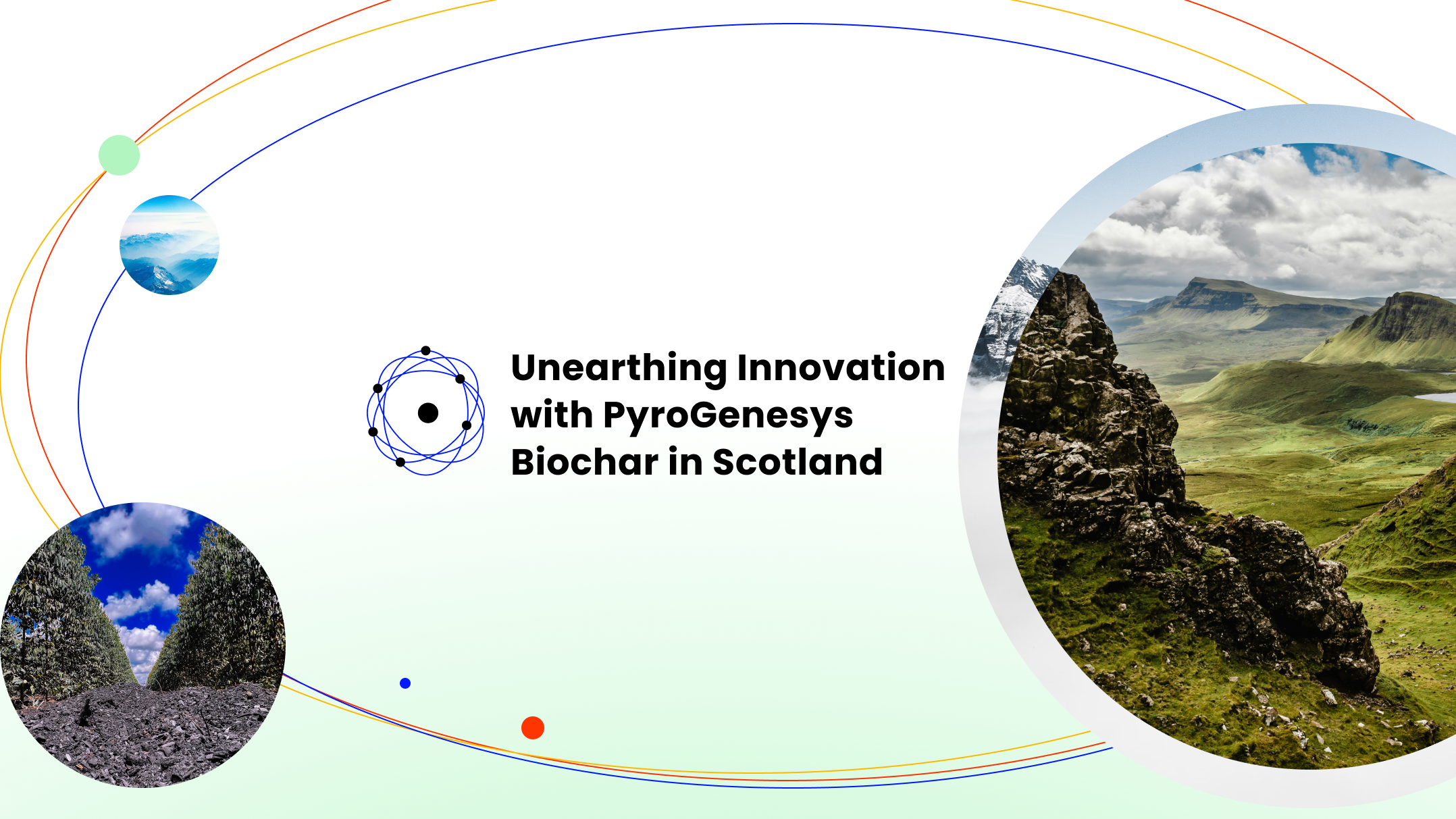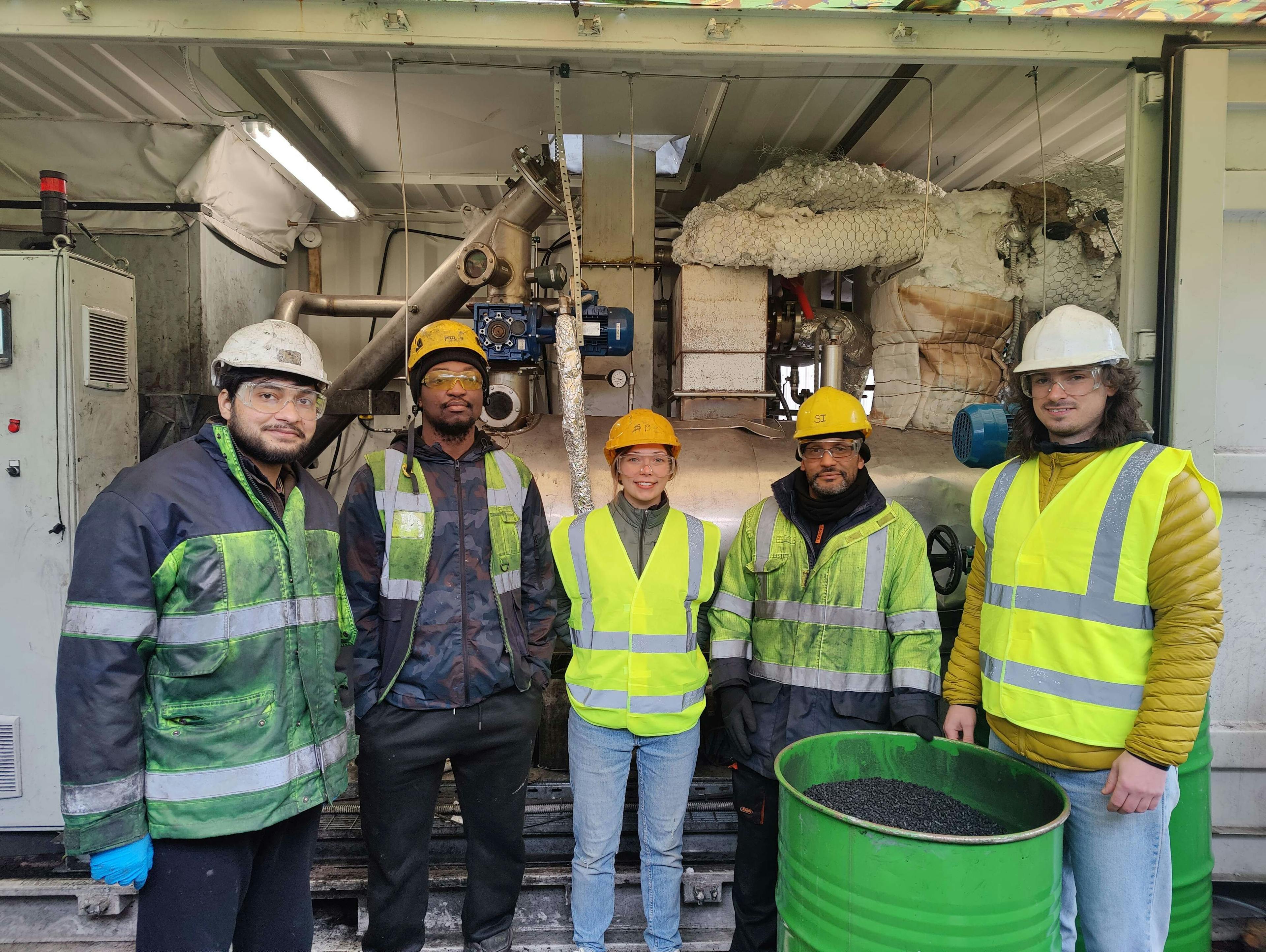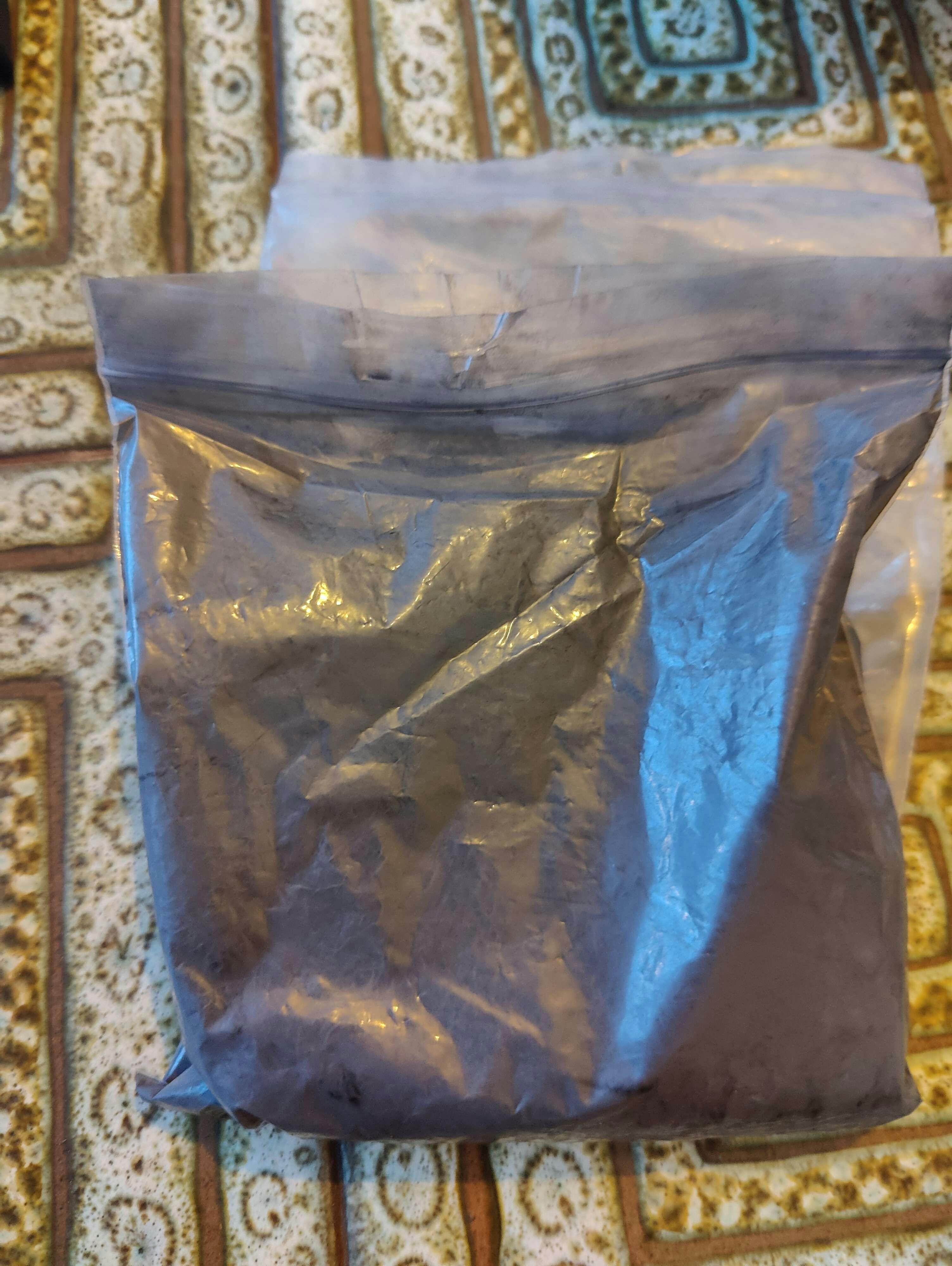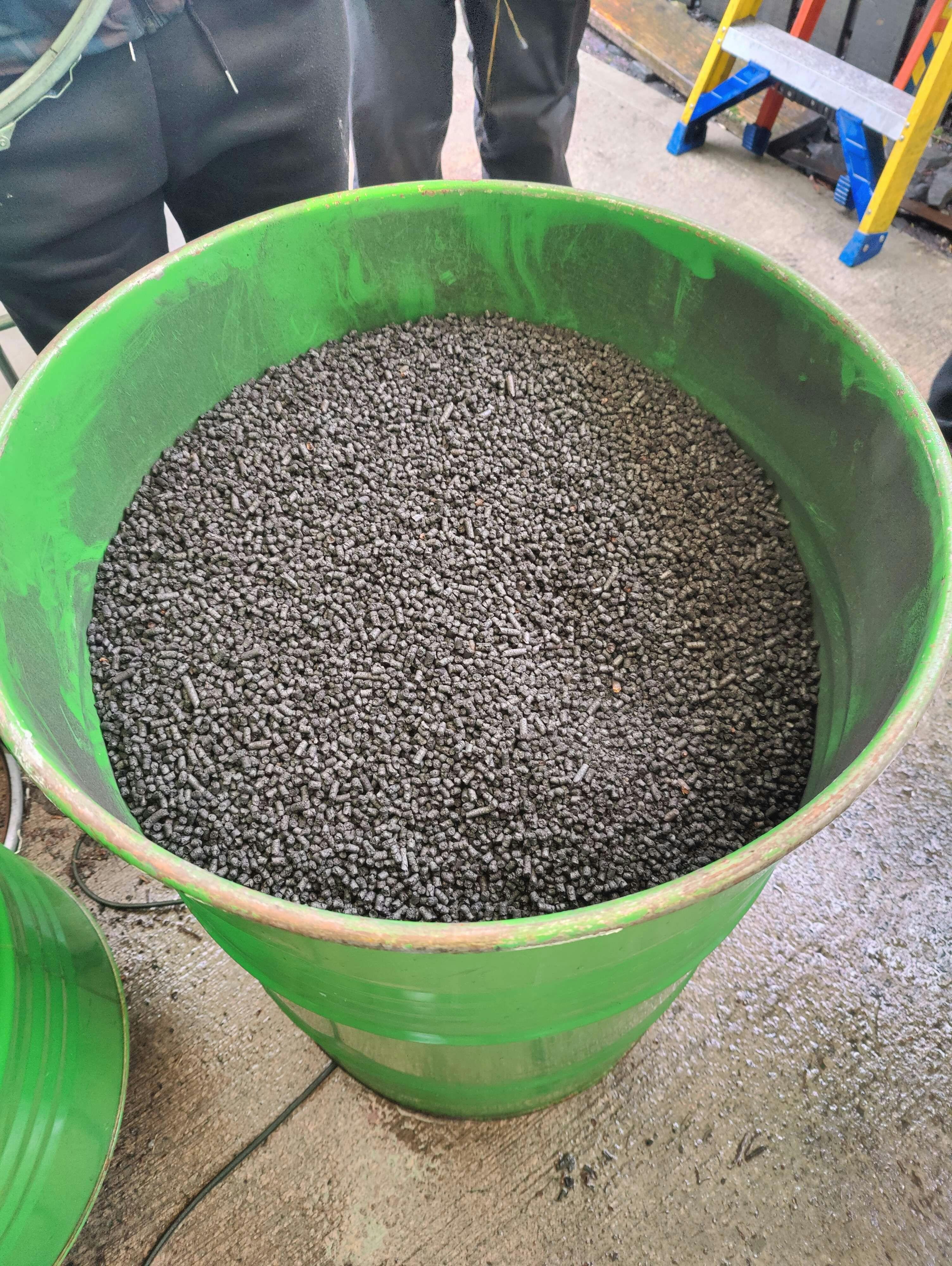
Unearthing Innovation with PyroGenesys Biochar in Scotland
April 9, 2024
Our Co-Founder Alex Taylor was recently invited to Scotland to visit PyroGenesys and CEO Simon Ighofose - the team developing an innovative biochar facility in North Lanarkshire.

PyroGenesys was founded in 2017, with a vision to develop and deploy sustainable, efficient and modular biochar facilities across the globe.
They have been funded by the Department for Energy Security and Net Zero to deploy a pilot facility at an animal feed factory in Lanarkshire. With the trial coming to an end soon the facility is fully operational, and yielding great results.
The facility itself can:
- Sustain the endothermic pyrolysis process itself, through the cracking and combustion of the pyrolysis vapours produced in the reactor, mitigating a reliance on fossil fuel for the heat required in the process.
- Provide hot water to the feed manufacturers’ industrial boiler that is required for their agricultural processes, displacing their dependency on mains gas and mitigating the carbon impact of the facility’s own carbon emissions.
- Creates a biochar product that has numerous benefits (including carbon removal!)
The magic of pyrolysis is that it can use a variety of combustible waste biomass feedstocks to do something useful. These are feedstocks that may otherwise be sent to landfill – at a cost to producers of waste, or local authorities.
Using this feedstock to create biochar – which is one of the outputs of pyrolysis alongside renewable heat (in the form of hot water) and cracked pyrolysis vapours – enables the creation of a legitimately useful commodity that has a range of use-cases including (but certainly not limited to):
- Soil amendment: improve soil health and fertility by retaining water and nutrients.
- Water treatment: biochar’s porous nature and large surface area means it can absorb contaminants and heavy metals to treat water.
- Construction materials: adding biochar to construction materials such as plaster, concrete and insulation materials can improve their thermal and moisture resistance properties.
We are of course hearing a lot about biochar at the moment within the context of carbon removals and carbon markets. This comes from the fact that the pyrolysis process itself fixes carbon into the biochar output; when this biochar is used in non-destructive end-use applications such as the above, it ensures this carbon is removed from the carbon cycle and stored.
As a leaving gift, Simon gave us this 100g bag of biochar from the pilot - it contains around 75 grams of carbon - fixing around 250gCO2e (remember, gases are less dense than air, so for each unit of carbon in biochar; a lot more carbon dioxide is actually fixed).

Imagine if we can actually deploy pyrolysis technology at a global scale, creating useful commodities that fix the carbon from waste biomass that will otherwise sit there decomposing and releasing gases into our atmosphere, whilst training local people to participate in the development of these facilities and their business cases?
The impact for our planet and local communities will be significant.
This is why biochar is such a hot commodity in the carbon markets today, but more importantly, why so much hard work is going into developing facilities such as the one developed by PyroGenesys - because it really is innovation that can scale, and have real climate impact.

Disclaimer:
Carbonmark (“Carbonmark”), its digital-assets, business assets, strategy, and operations, is for general informational purposes only and is not a formal offer to sell or a solicitation of an offer to buy any securities, options, futures, or other derivatives related to securities in any jurisdiction and its content is not prescribed by securities laws. Information contained in this blog post should not be relied upon as advice to buy or sell or hold such securities or as an offer to sell such securities. This blog post does not take into account nor does it provide any tax, legal or investment advice or opinion regarding the specific investment objectives or financial situation of any person. Carbonmark and its agents, advisors, directors, officers, employees and shareholders make no representation or warranties, expressed or implied, as to the accuracy of such information and Carbonmark expressly disclaims any and all liability that may be based on such information or errors or omissions thereof. Carbonmark reserves the right to amend or replace the information contained herein, in part or entirely, at any time, and undertakes no obligation to provide the recipient with access to the amended information or to notify the recipient thereof. The information contained in this blog post supersedes any prior blog post or conversation concerning the same, similar or related information. Any information, representations or statements not contained herein shall not be relied upon for any purpose. Neither Carbonmark nor any of its representatives shall have any liability whatsoever, under contract, tort, trust or otherwise, to you or any person resulting from the use of the information in this blog post by you or any of your representatives or for omissions from the information in this blog post. Additionally, Carbonmark undertakes no obligation to comment on the expectations of, or statements made by, third parties in respect of the matters discussed in this blog post.